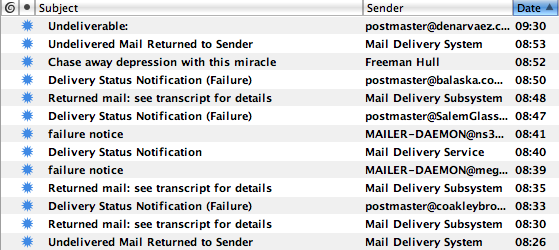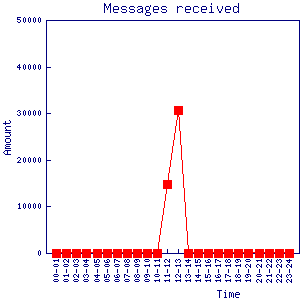During the past two months or so, I’ve pushed really hard to finish a project that I’ve been “working on” for the past year. The project was to rename, streamline, and solidify my web hosting business. This included registering the business as a trade name with the state, opening a business bank account, opening a post office box, designing a new website, and setting up and integrating the billing system into the website.
The hosting business originally started as a side-project — something I set up to host my own websites and those of friends and colleagues. I hadn’t anticipated the business growing and not putting much thought into setting it up properly from the start was a mistake.
As the number of hosting clients grew, I found it increasingly difficult to keep track of account balances, payments, contact information, account statuses, etc. I realized that I needed something that would automatically generate invoices and send them out, accept payments through my website, and handle new account signups.
I researched various billing systems and eventually settled with WHM.AutoPilot: It was relatively inexpensive and appeared to have everything I needed. However, after adding all my clients and reconciling the accounts, I struggled to get the system working just the way I wanted. There were many bugs and newer versions weren’t being released in a timely manner. It felt as though the billing software just made things more complicated rather than improving them.
All the while, my hosting business continued to grow. Despite bad accounting and being very unorganized, clients were continuing to roll in by word-of-mouth advertising. Every time a new client would sign up, I felt embarrassed that I didn’t have something more professional to present to them. I was beginning to dislike the thought of setting up new accounts!
That’s when I realized I really needed to streamline everything and make growth less of a burden. (Growth should be easy, not something you dread!) So almost exactly a year ago, I decided to change the name of the business to ActualWebSpace, open a bank account so clients could make checks payable to the business instead of my personal name, and get everything set up properly once and for all.
After researching billing systems once again, I decided on and purchased WHMCS. The developers seemed more “on top of things” and the community around the software appeared very active. It used a very simple PHP templating system that would make integrating the billing system into the website very simple.
So that I could offer domain registration and SSL certificates, I signed up for an eNom reseller account. WHMCS included full integration with eNom, so automating domains and SSL certificates was easy.
For the website, I decided to use WordPress as a back-end and design a WordPress theme from scratch. It was both the first time I had set up WordPress as a CMS and the first time I had designed a WordPress theme from scratch. While it extended the amount of time it took the launch the site, it was an invaluable learning experience.
Setting up the website was probably the most difficult part of the entire process for me. I’m a perfectionist and it’s difficult for me to create something and be happy with it. But, after much persistence, I discovered ways of getting out of my perfectionist state of mind and I made enormous progress in the past few weeks.
I launched the new website for ActualWebSpace yesterday. It has been almost a year in the making and it feels great to finally follow through with a project to the end. I’m going to use the lessons I learned to start, and finish, my next project (still deciding what that will be).
The biggest lesson I learned from this year-long project: When starting any kind of venture that has the potential to grow, set things up properly from the beginning. Plan for and anticipate growth instead of waiting until the growth begins to happen.


